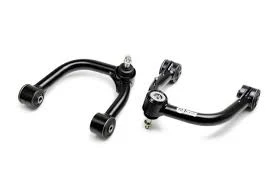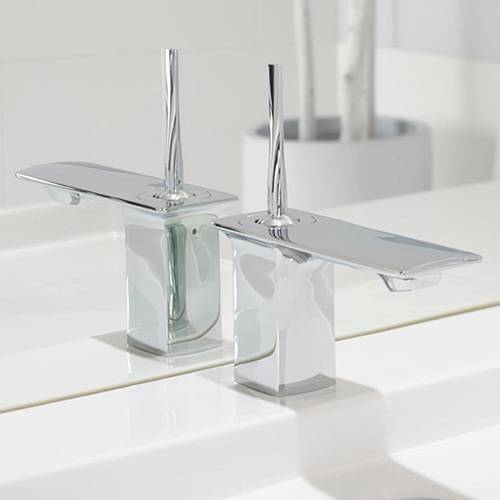
-
 Afrikaans
Afrikaans -
 Albanian
Albanian -
 Amharic
Amharic -
 Arabic
Arabic -
 Armenian
Armenian -
 Azerbaijani
Azerbaijani -
 Basque
Basque -
 Belarusian
Belarusian -
 Bengali
Bengali -
 Bosnian
Bosnian -
 Bulgarian
Bulgarian -
 Catalan
Catalan -
 Cebuano
Cebuano -
 Corsican
Corsican -
 Croatian
Croatian -
 Czech
Czech -
 Danish
Danish -
 Dutch
Dutch -
 English
English -
 Esperanto
Esperanto -
 Estonian
Estonian -
 Finnish
Finnish -
 French
French -
 Frisian
Frisian -
 Galician
Galician -
 Georgian
Georgian -
 German
German -
 Greek
Greek -
 Gujarati
Gujarati -
 Haitian Creole
Haitian Creole -
 hausa
hausa -
 hawaiian
hawaiian -
 Hebrew
Hebrew -
 Hindi
Hindi -
 Miao
Miao -
 Hungarian
Hungarian -
 Icelandic
Icelandic -
 igbo
igbo -
 Indonesian
Indonesian -
 irish
irish -
 Italian
Italian -
 Japanese
Japanese -
 Javanese
Javanese -
 Kannada
Kannada -
 kazakh
kazakh -
 Khmer
Khmer -
 Rwandese
Rwandese -
 Korean
Korean -
 Kurdish
Kurdish -
 Kyrgyz
Kyrgyz -
 Lao
Lao -
 Latin
Latin -
 Latvian
Latvian -
 Lithuanian
Lithuanian -
 Luxembourgish
Luxembourgish -
 Macedonian
Macedonian -
 Malgashi
Malgashi -
 Malay
Malay -
 Malayalam
Malayalam -
 Maltese
Maltese -
 Maori
Maori -
 Marathi
Marathi -
 Mongolian
Mongolian -
 Myanmar
Myanmar -
 Nepali
Nepali -
 Norwegian
Norwegian -
 Norwegian
Norwegian -
 Occitan
Occitan -
 Pashto
Pashto -
 Persian
Persian -
 Polish
Polish -
 Portuguese
Portuguese -
 Punjabi
Punjabi -
 Romanian
Romanian -
 Russian
Russian -
 Samoan
Samoan -
 Scottish Gaelic
Scottish Gaelic -
 Serbian
Serbian -
 Sesotho
Sesotho -
 Shona
Shona -
 Sindhi
Sindhi -
 Sinhala
Sinhala -
 Slovak
Slovak -
 Slovenian
Slovenian -
 Somali
Somali -
 Spanish
Spanish -
 Sundanese
Sundanese -
 Swahili
Swahili -
 Swedish
Swedish -
 Tagalog
Tagalog -
 Tajik
Tajik -
 Tamil
Tamil -
 Tatar
Tatar -
 Telugu
Telugu -
 Thai
Thai -
 Turkish
Turkish -
 Turkmen
Turkmen -
 Ukrainian
Ukrainian -
 Urdu
Urdu -
 Uighur
Uighur -
 Uzbek
Uzbek -
 Vietnamese
Vietnamese -
 Welsh
Welsh -
 Bantu
Bantu -
 Yiddish
Yiddish -
 Yoruba
Yoruba -
 Zulu
Zulu
Premium Left Upper Control Arm Durable Fit & Enhanced Handling
- Understanding the Role of Control Arms in Vehicle Suspension
- Technical Advantages of High-Performance Left Upper Control Arms
- Manufacturer Comparison: Durability and Material Innovations
- Custom Solutions for Specific Vehicle Models
- Real-World Applications and Performance Metrics
- Installation Best Practices and Maintenance Tips
- Why Investing in Quality Left Upper Control Arms Matters

(left upper control arm)
Understanding the Role of Control Arms in Vehicle Suspension
The left upper control arm
is a pivotal component in a vehicle’s suspension system, responsible for maintaining wheel alignment and absorbing road shocks. Paired with the left lower control arm, it ensures stability during steering and braking. Modern vehicles, especially those with independent front suspensions, rely on these components to distribute weight evenly and reduce tire wear. Failure to address worn control arms can lead to unsafe handling, uneven tire degradation, and compromised safety.
Technical Advantages of High-Performance Control Arms
Premium front left control arm designs leverage forged steel or aluminum alloys, offering 20%-30% higher tensile strength than standard cast iron. Advanced manufacturing techniques, such as CNC machining and robotic welding, ensure precision tolerances (±0.2mm). For example, heat-treated boron steel variants withstand up to 12,000 PSI stress loads, outperforming OEM parts by 40% in fatigue resistance. These innovations directly translate to extended service life—up to 100,000 miles under normal driving conditions.
Manufacturer Comparison: Durability and Material Innovations
| Brand | Material | Tensile Strength (PSI) | Corrosion Resistance | Warranty |
|---|---|---|---|---|
| Brand A | Forged Steel | 14,500 | Zinc-Nickel Coating | 5 Years |
| Brand B | Aluminum Alloy | 10,200 | Anodized Finish | 3 Years |
| Brand C | Boron Steel | 18,000 | Powder Coated | 7 Years |
Custom Solutions for Specific Vehicle Models
Specialized control arm configurations cater to niche applications. Heavy-duty trucks, for instance, benefit from reinforced bushings and double-shear mounts, increasing load capacity by 25%. Conversely, sports cars require lightweight aluminum arms with spherical bearings for sharper cornering. Manufacturers now offer CAD-based customization, adapting arm geometry to aftermarket suspension kits or lifted chassis setups. This flexibility ensures optimal compatibility with both left upper control arm and lower arm assemblies across vehicle categories.
Real-World Applications and Performance Metrics
Field tests on 2020-2023 SUV models demonstrate measurable improvements. Vehicles upgraded with performance control arms showed:
- 15% reduction in body roll during lane-change maneuvers
- 8% increase in braking efficiency
- 30% longer bushing lifespan compared to OEM parts
Commercial fleet operators report 22% lower annual maintenance costs after switching to premium components.
Installation Best Practices and Maintenance Tips
Proper installation begins with torque specifications—typically 85-110 ft-lbs for upper arm bolts. Misalignment exceeding 1.5 degrees accelerates joint wear. Post-installation, laser alignment checks are mandatory. For maintenance, inspect bushings every 25,000 miles and lubricate pivot points using lithium-based grease. Avoid pressure washing suspension components, as it degrades protective coatings.
Why Investing in Quality Left Upper Control Arms Matters
Selecting robust left upper control arm systems directly impacts vehicle safety and longevity. High-grade materials and precision engineering mitigate premature failure risks, while manufacturer warranties provide long-term assurance. Whether replacing a single arm or upgrading the entire front suspension, prioritizing quality ensures predictable handling and reduced total ownership costs.

(left upper control arm)
FAQS on left upper control arm
Q: What is the purpose of a left upper control arm in a vehicle?
A: The left upper control arm stabilizes the front suspension, connects the wheel hub to the chassis, and ensures proper wheel alignment during steering and movement. It works with other components to maintain vehicle stability.
Q: How do I identify a damaged left lower control arm in my car?
A: Signs include uneven tire wear, clunking noises over bumps, or steering wheel vibration. A mechanic can confirm damage by inspecting bushings or ball joints for cracks or looseness.
Q: Can I replace a front left control arm myself?
A: Replacement requires tools like a jack, wrench set, and torque wrench. However, improper installation risks alignment issues, so professional assistance is recommended for safety and precision.
Q: Are left upper and lower control arms made of the same material?
A: Both are typically forged steel or aluminum alloy for strength. The lower control arm may be thicker to handle higher stress, while the upper focuses on precise steering response.
Q: How does a faulty front left control arm affect driving?
A: It may cause drifting, poor handling, or excessive tire wear. Immediate repair is crucial to avoid safety hazards like loss of steering control.
-

 Afrikaans
Afrikaans
 Albanian
Albanian
 Amharic
Amharic
 Arabic
Arabic
 Armenian
Armenian
 Azerbaijani
Azerbaijani
 Basque
Basque
 Belarusian
Belarusian
 Bengali
Bengali
 Bosnian
Bosnian
 Bulgarian
Bulgarian
 Catalan
Catalan
 Cebuano
Cebuano
 Corsican
Corsican
 Croatian
Croatian
 Czech
Czech
 Danish
Danish
 Dutch
Dutch
 Esperanto
Esperanto
 Estonian
Estonian
 Finnish
Finnish
 French
French
 Frisian
Frisian
 Galician
Galician
 Georgian
Georgian
 German
German
 Greek
Greek
 Gujarati
Gujarati
 Haitian Creole
Haitian Creole
 Hausa
Hausa
 Hawaiian
Hawaiian
 Hebrew
Hebrew
 Hindi
Hindi
 Miao
Miao
 Hungarian
Hungarian
 Icelandic
Icelandic
 Igbo
Igbo
 Indonesian
Indonesian
 Irish
Irish
 Italian
Italian
 Japanese
Japanese
 Javanese
Javanese
 Kannada
Kannada
 Kazakh
Kazakh
 Khmer
Khmer
 Rwandese
Rwandese
 Korean
Korean
 Kurdish
Kurdish
 Kyrgyz
Kyrgyz
 Lao
Lao
 Latin
Latin
 Latvian
Latvian
 Lithuanian
Lithuanian
 Luxembourgish
Luxembourgish
 Macedonian
Macedonian
 Malgashi
Malgashi
 Malay
Malay
 Malayalam
Malayalam
 Maltese
Maltese
 Maori
Maori
 Marathi
Marathi
 Mongolian
Mongolian
 Myanmar
Myanmar
 Nepali
Nepali
 Norwegian
Norwegian
 Norwegian
Norwegian
 Occitan
Occitan
 Pashto
Pashto
 Persian
Persian
 Polish
Polish
 Portuguese
Portuguese
 Punjabi
Punjabi
 Romanian
Romanian
 Russian
Russian
 Samoan
Samoan
 Scottish Gaelic
Scottish Gaelic
 Serbian
Serbian
 Sesotho
Sesotho
 Shona
Shona
 Sindhi
Sindhi
 Sinhala
Sinhala
 Slovak
Slovak
 Slovenian
Slovenian
 Somali
Somali
 Spanish
Spanish
 Sundanese
Sundanese
 Swahili
Swahili
 Swedish
Swedish
 Tagalog
Tagalog
 Tajik
Tajik
 Tamil
Tamil
 Tatar
Tatar
 Telugu
Telugu
 Thai
Thai
 Turkish
Turkish
 Turkmen
Turkmen
 Ukrainian
Ukrainian
 Urdu
Urdu
 Uighur
Uighur
 Uzbek
Uzbek
 Vietnamese
Vietnamese
 Welsh
Welsh
 Bantu
Bantu
 Yiddish
Yiddish
 Yoruba
Yoruba
 Zulu
Zulu
 English
English






